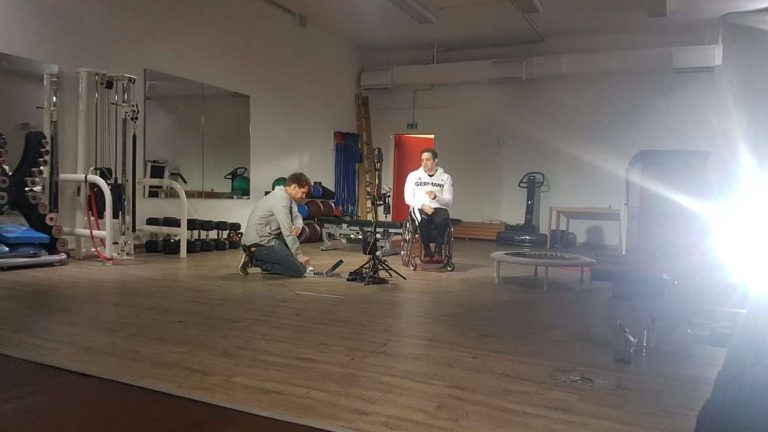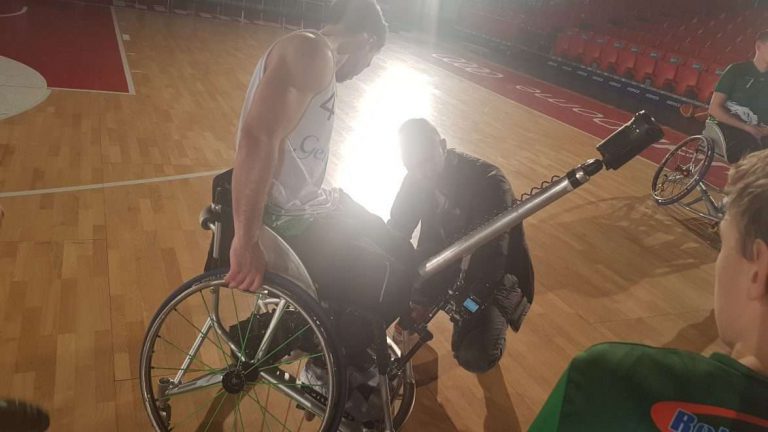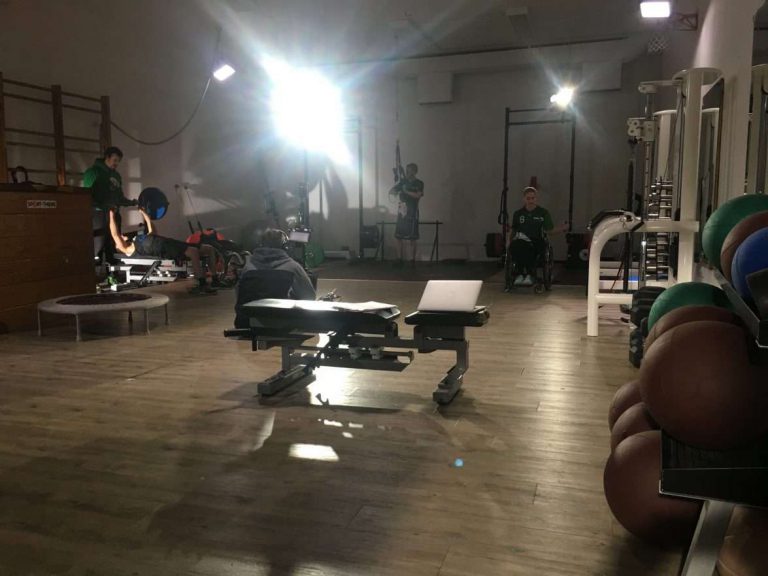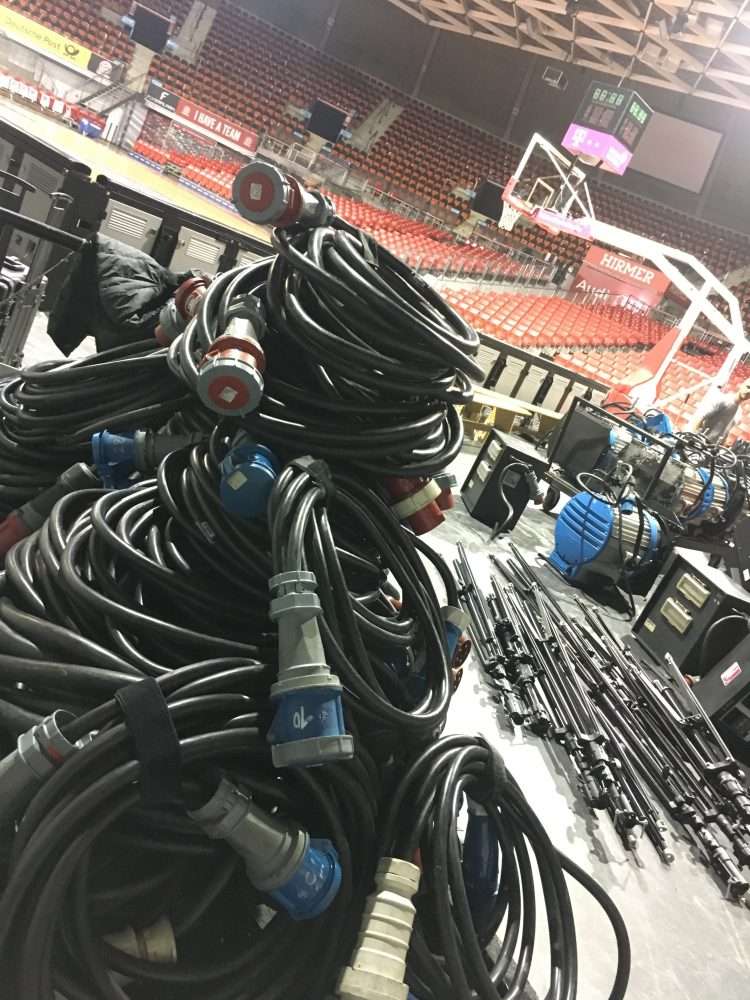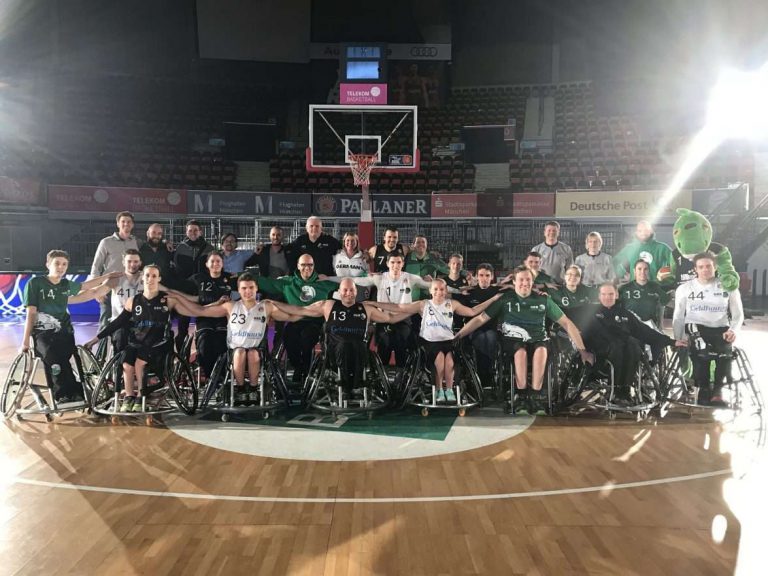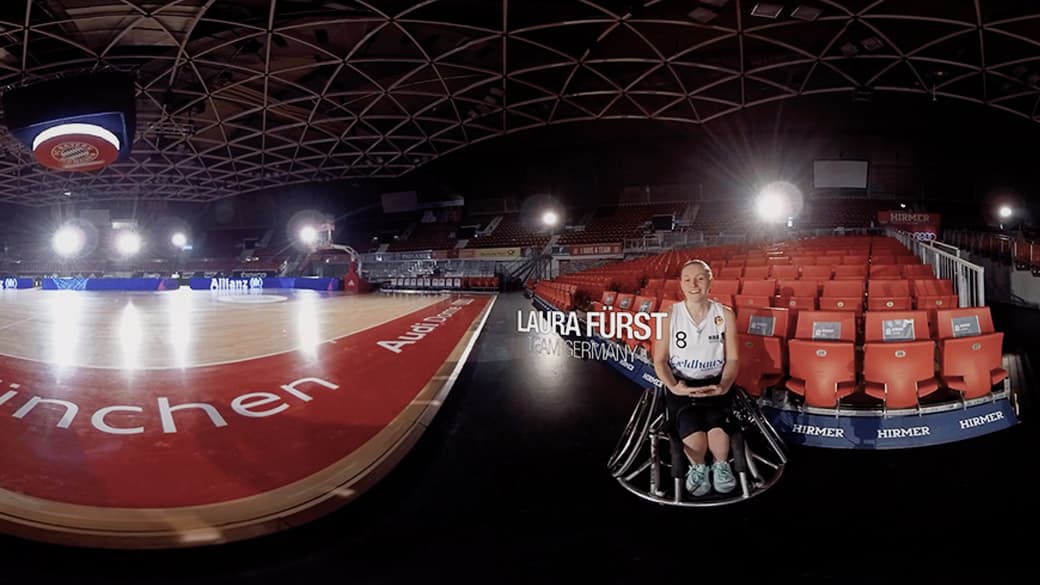
Allianz Wheelchair Basketball (360 Video with Spatial Audio)

Why: The Importance of 360 Video and 3D Audio for Immersive Experiences
360 degree videos and 360 degree spatial audio are key to immersing viewers directly into the action. These technologies enable not only visual but also auditory immersion in the game or scene. 360 videos offer viewers a full panoramic view, while 3D Audio creates a spatial soundscape that makes the sounds appear to come from all directions. This enhances the perception and makes the experience more tangible and real, providing a fully immersive sound experience.
Using Virtual Reality and Spatial Audio for Emotional Engagement
Virtual reality (VR) and spatial audio are crucial for establishing a deep emotional connection with the audience. VR ensures that the audience is fully immersed in the virtual world, while spatial audio dynamically tracks and adjusts the sound based on the viewer’s head movements. This creates the feeling of truly being in the space, which is essential for such a dynamic and intense experience as a basketball game. 3D Audio allows sounds to be precisely perceived from specific directions, making the audio experience more realistic and compelling by allowing the listener to hear sound sources from the correct location.
Goal of the Allianz Wheelchair Basketball Project
The aim of the Allianz Wheelchair Basketball project was to enhance the significance of the sport through the combination of 360 video, 3D Audio, and object based audio. The goal was not just to show the game but to make the physical and acoustic world of the players tangible for the viewers. Through immersive technology and headphones, viewers could feel the speed and dynamics of the game as well as the intense atmosphere on the court. The interplay between video and sound amplified the experience, opening up a unique access to this fascinating sport.
How: The Technology Behind the 360 Video 3D Audio Experience
Onboard Recordings: Capturing the Sound from the Middle of the Court
One of the biggest challenges of this 360 video project was placing microphones and cameras on a moving wheelchair. It was crucial that the audience perceived the sound as if they were right in the middle of the court. Apple Spatial Audio plays a significant role in providing a realistic surround sound experience, similar to being on the court, especially when using multiple speakers . Special microphones and speakers were used, capable of precisely capturing not just the sounds but also the movements and intensity of the game. Proper positioning and calibration of the audio equipment were essential to ensure clear and authentic playback. The audio technology has evolved to include spatial reproduction that integrates multiple layers, reflecting the immersive music experience by taking sound beyond the stereo format.
Interview Recordings: Ensuring Clarity Despite Background Activity
In addition to the onboard recordings, the interview situation also played a central role. It was crucial that the speaking player was clearly heard, despite ongoing training in the background. Various microphones and digital audio workstations like Zoom were used to ensure optimal audio quality. Thanks to precise microphone placement and focus on the speaker, background noises were minimized, allowing the studio audience to concentrate on the interview without distraction. This is where surround sound was recorded with a slight delay, providing flexibility during post-production to align sound and video.
Use of Ambisonics and Surround Sound for 360 Degree Videos
The use of Ambisonics was essential for the audio recording, as this technology enables the capture and reproduction of sound fields from multiple directions. This was critical in realistically portraying the sound field of the court and the atmosphere in the 360 video. The technical challenges of mounting the audio equipment on a wheelchair were significant. Due to limited space, small but powerful microphones and shock mounts devices were used to capture sound without vibration, even while the wheelchair was in motion. The Sony Headphones Connect app further enhances the audio experience by personalizing sound settings based on individual hearing profiles.
Audio Formats Used: Ambix, TBE, and Quad-Binaural
To ensure optimal playback of the 3D Audio experience across different platforms, the project was produced in multiple formats. In addition to the Ambix format, which was specifically used for YouTube VR, the Two Big Ears (TBE) format and the quad-binaural format were used for the Samsung VR Player app. These formats ensure that the sound is immersive and realistic, especially when using certified speakers no matter the platform, giving the audience the feeling of truly being present.
For the best audio playback capabilities, it is recommended to use a compatible music streaming service app that supports features like 360 Reality Audio with your own headphones .
Compatible Hardware and Software for Music streaming.
A lot of companies try to sell you something new, especially for live concerts but all of this below is not even needed:
For starters, Sony’s 360 Reality Audio certified headphones, such as the WH-1000XM4, are designed to deliver a truly immersive audio experience. Other compatible headphones include the Sennheiser AMBEO Soundbar and the Amazon Echo Studio, both of which provide exceptional surround sound to your ear .
When it comes to creating and mixing spatial audio content, digital audio workstations (DAWs) like Ableton Live, Logic Pro, and Pro Tools are indispensable. These DAWs support spatial audio and can be enhanced with software plugins like 360 WalkMix Creator to improve the overall listening experience . For those looking to listen to spatial audio tracks, compatible music streaming services such as Tidal, Amazon Music, and Apple Music offer a wide range of options. Additionally, the Artist Connection app allows you to enjoy these tracks on your smartphone.
Creating spatial audio content requires a well-equipped recording studio. Essential equipment includes specialized microphones, audio interfaces, and software plugins that support spatial audio, including object based audio technology . By using these tools, you can ensure that your audio content is as immersive and high-quality as possible.
Uploading and Previewing Spatial Audio Videos
Uploading spatial audio videos to YouTube is a straightforward process if you follow these steps, allowing you to include more tracks in your production.
-
Ensure your video meets the technical requirements outlined in the YouTube spatial audio spec. This includes using the correct video format, resolution, and audio settings.
-
Upload your video to YouTube and select the “Spatial audio” option during the upload process.
-
Preview your video using the Resonance Audio Monitor VST plugins to ensure the spatial audio is working correctly. These plugins allow you to test and adjust the spatial audio settings before making your video public.
By following these steps, you can ensure that your spatial audio videos provide an immersive experience for your audience, showcasing the work of various artists .
Troubleshooting Common Spatial Audio Issues
Encountering issues with spatial audio can be frustrating, but here are some common problems and their solutions:
-
Audio not playing in surround sound: First, check that your headphones are compatible with spatial audio. Ensure that the audio settings on your device are configured correctly to support spatial audio.
-
Audio not syncing with video: Make sure that the audio and video are properly synced in your DAW or video editing software. This often involves aligning the audio and video tracks precisely.
-
Audio sounding distorted: Check that the audio levels are not too high, as this can cause distortion. Ensure that the audio settings are correct and that there are no issues with the audio files themselves.
By addressing these common issues, you can enhance the quality of your spatial audio experience by optimizing the settings for your speakers .
What: The Outcome and the Future of 360 Video and 3D Audio
The 360 Degree Video Experience: Immersive Sound and Realism
The outcome of this project was an impressive 360 degree video, where the use of 3D Audio and dynamic sound gave viewers the feeling of being right in the middle of the action. The sound was not just a complement or support to the visual experience but a central element that made the action feel even more real. A particular challenge during post-production was adjusting the video rotation, especially during onboard recordings. Thanks to modern plugins, the entire sound scene was precisely adapted to the wheelchair’s rotation after the video was stabilized, ensuring seamless synchronization between image and audio.
Spatial Sound and Audio Quality: Precision and Realism
The spatial sound experience in this project was based on the precise positioning of sounds. Each sound had to be placed so that the audience felt like they were at the center of the action. Whether it was the sound of the basketball bouncing or conversations during the game, each sound source was strategically positioned to create an immersive and realistic sound field. The high audio quality helped capture the intensity and dynamics of the game, allowing viewers to not only see but also feel the action on the court.
Creating Immersive Audio Experiences for Sports Broadcasting
Spatial audio can significantly enhance the sports broadcasting experience by providing a more immersive and engaging audio environment. Here are some tips for creating immersive audio experiences for sports broadcasting:
-
Use 3D audio to create a more immersive experience, with sound coming from specific locations in 3D space. This can make the audience feel like they are right in the middle of the action.
-
Head-Locked Stereo audio can create a more engaging experience by ensuring that the sound remains consistent even when the viewer moves their head. This technique helps maintain the immersive quality of the audio.
-
Utilize software plugins like 360 WalkMix Creator to create and mix spatial audio content. These tools allow for precise control over the audio environment, enhancing the overall experience.
-
Experiment with different audio settings and techniques to create a unique and engaging audio experience. By trying out various approaches, you can find the best methods to captivate your audience.
By incorporating these techniques, you can create a new immersive music experience that elevates sports broadcasting to a whole new level.
Future Potential: A Model for Immersive VR and Immersive Music Experience Productions
The Allianz Wheelchair Basketball project serves as a model for future VR productions where 360 degree videos and 3D Audio play a central role. The ability to make the audience feel physically and acoustically immersed in the scene offers immense opportunities in sports, marketing, and other fields. Immersive, reality audio and video will revolutionize storytelling by making the audience an active participant rather than a passive consumer. This project demonstrates the enormous potential that lies in the combination of virtual reality and immersive audio, marking a significant step forward in the future of interactive media.
Conclusion
Immersive experiences are a new form of entertainment that engage the viewer in a virtual world. By combining 360 degree videos, 3D Audio, and spatial audio, a realistic experience is created that draws the viewer into the scene. This technology is used across industries like film, TV, advertising, education, and entertainment. It offers numerous benefits such as higher engagement and better retention of the experience. The future of immersive experiences is promising and will revolutionize the way we consume content.
